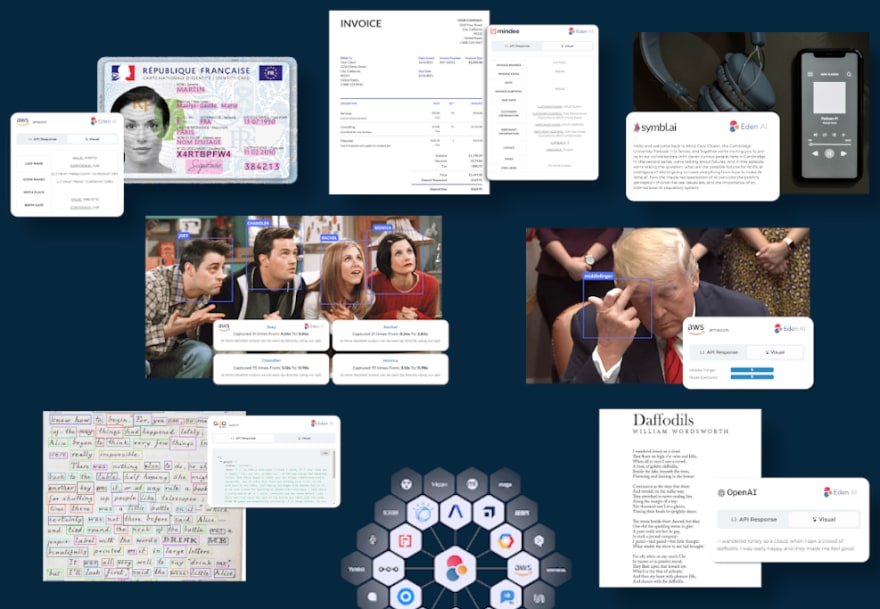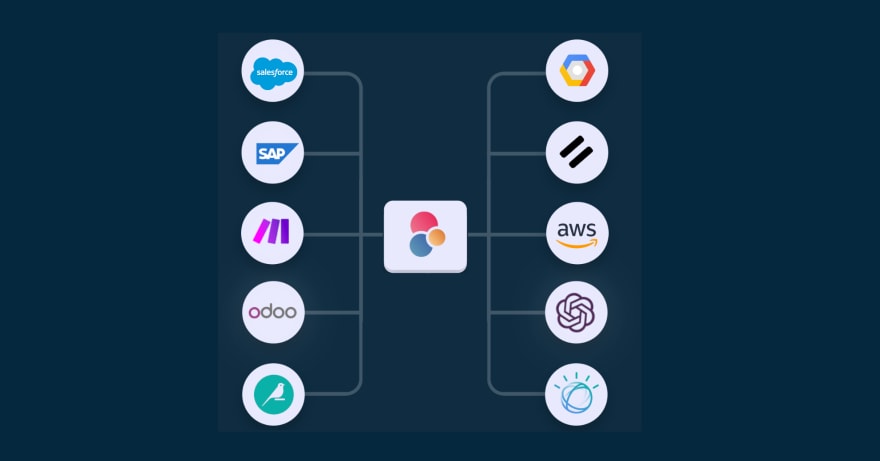Artificial Intelligence is about allowing a machine to mimic intelligent human behavior. Now, machine and deep learning make it possible to teach computers with data what we fail to describe in an algorithmic approach. This unlocks new capabilities for our programs to :
- 📖 Read a text and understanding concepts like : the topic of the text, the sentiment of the writer and the key concepts it talks about
- 🗣️ Hear a voice , understand the words it says and responding to it (Siri and Alexa : speech to text and text to speech)
- 🎥 Look at an image or watch a video and understand the big picture and the details of what it contains
- 🔮 Predict the future : Based on historical data, predict malfunctions, miss payments, growth ...etc
But in order to achieve these objectives, you have to train large models with millions of labeled data.
Now, with the rise of AI as a Service , a lot of companies provide off-the-shelf trained models that you can access directly through an API. These companies are either the tech giants (Google, Microsoft , Amazon) or other smaller, more specialized companies, and there are hundreds of them. Some of the most known are : DeepL (translation), OpenAI (text and image analysis), AssemblyAI (speech analysis).
There is a large panel of AI companies each one providing new and innovative AI models with wide variety of applications and an important mission would be to :
1/ Empower any stack developers with easy access to on-demand intelligence.
Intelligence is the new essential resource that’s usually compared with energy (AI is the new electricity).
Simplifying access to intelligence by making it an on-demand self service is important to reduce friction and encourage innovation.
And what a better way of presenting this than simple and intuitive API with clear and complete documentation and a great graphical tool for simple exploration!
2/ Discover and showcase the best AI can offer.
Anyone should know how easy it is to moderate any type of content (images, videos, text), to automatically transcribe an audio file and understand its content or to translate an entire word, pdf or ppt document while keeping its structure intact.
With the rise of generative models, it's also important to know what applications it could have. With the right prompt, generative models can be extremely useful. You can use them to classify documents, summarize them or ask questions to retrieve valuable information from them.
But it's very hard to know what company does what and at what price.
So we believe that it's important to clarify all of this innovation by bring it all together so that any new applications AI companies create can be easily discovered in one place.
3/ Bringing it all together for greater flexibility
One needs to keep up with the rapid advancements of artificial intelligence by switching to new AI providers as soon as they outperform old ones. So having the provider as a simple API parameter can be a huge advantage.
Combining multiple providers can be very important too : You need to extract specific information from a document but AWS's API doesn't support your language ? It's OK you can translate the document with DeepL and query AWS with a single API and with a single account.
Finally, in order to make AI at the hand of everyone, we're working on getting AI everywhere by integrating all AI APIs into different solutions : ERP (like oodoo and sap ), CRMs (like salesforce), NoCode platforms (make-integromat, zapier bubble…etc) and other tools like Data Platforms (Alterix, Dataiku).
Open Source :
Now we’re open sourcing our aggregation layer as a python module that you can ⭐ find on github ⭐ .
Join us on our discord and let us know what you think of it. We'd love to have your feedback and/or contribution.










Top comments (1)
I'm moving all my writing to medium : medium.com/@samy_89073/